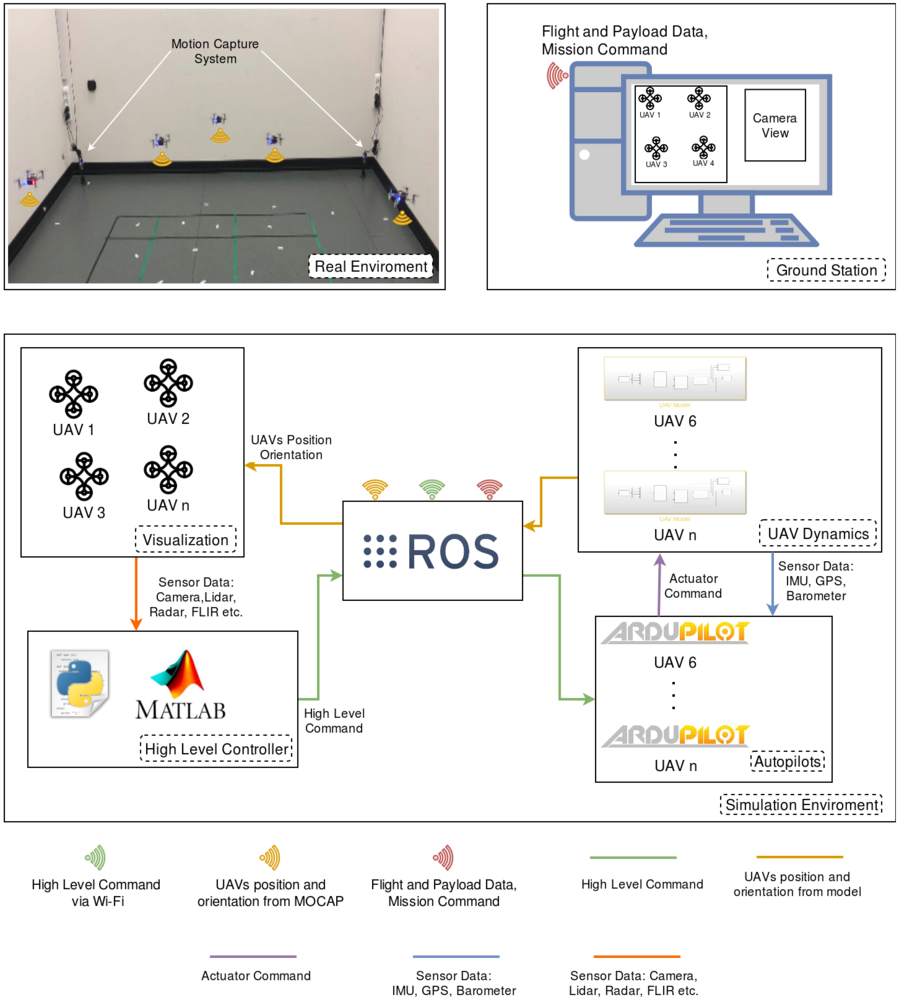Research
Swarm robotics research has demonstrated that a large robot swarm can be controlled without any centralized coordinating entity. However, limitations such as development overhead, and the complexity of managing swarm behavior as a whole when programming individual robots, have largely prevented these control approaches from moving to applications.
Therefore, I target the hybridization of centralized and decentralized control, in an attempt to address the limitations of each control approach. To do so, I use an approach based on the existing ‘mergeable nervous systems’ (MNS) technology to control multi-robot formation without the use of global references. The MNS concept combines aspects of centralized and decentralized control, via distributed asymmetric control over a communication graph formed exclusively by self-organization.
The main hypothesis for my Ph.D. is that a swarm robotics system consisting of robots on the ground and drones flying above them will be able to use this MNS technology to realize a system that is more manageable, robust, and trustworthy, without negating the potential parallelism, scalability, and flexibility of swarm robotics systems.
In my PhD research, I also study on formal swarm engineering methodology and analysis techniques for swarm robotics systems. I think that providing a solid theoretical foundation to results obtained empirically could help in understanding the potential capabilities of a swarm system, as well as its inherent limitations. This, in turn, would allow deploying swarms in the real world with more confidence on what can be expected from them.





